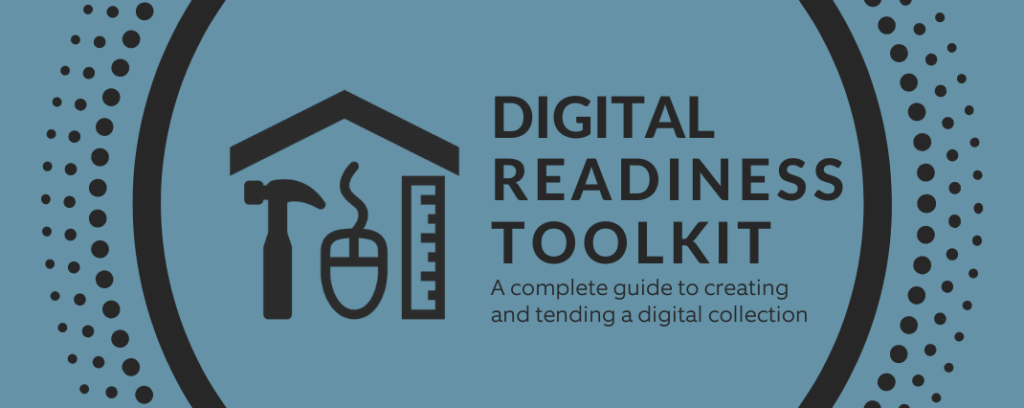
The Digital Readiness Toolkit focuses on seven topics at the heart of digital cultural heritage work. Each of these focus areas is organized into three levels: Bronze, Silver, and Gold. Together, these seven focus areas and three levels form the Digital Readiness Levels — a structured roadmap to plan and sustainably grow a digitization project.
Focus Areas and Levels
- Planning and prioritization: What is your project plan and how will you decide what to digitize?
- Permissions and copyright: How will you know if you can share these materials?
- Digitization: How will you undertake the actual digitization work?
- Description: How will you describe the digitized materials?
- Sharing and access: How will you share what you’ve digitized?
- Storage and maintenance: What is the long-term plan for storing digital materials?
- Evaluation: How will you know that what you set out to do was achieved?
Bronze Level: Laying a Strong Foundation
In this level, you will get your organization ready for successful digital work. You’ll define your goals, shore up your documentation and storage, and understand your options for moving forward.
Silver Level: Putting it Into Practice
In this level, you will identify, plan, and carry out a small-scale digital project. As you digitize, describe, share, and store a focused group of materials, you’ll test-drive the standards and processes you identified in the Bronze level.
Gold Level: Refining and Sustaining
In this level, you will strengthen your digital program by adopting key policies and enhance your ongoing digital project work with more advanced standards and procedures.
Of course, these tidy categories and incremental steps are much messier in the real world. Chances are, your organization may be further along in one focus area than another; for instance, you might already be following the Gold-level recommendations for digitizing, but at the Silver level for description, and the Bronze level in other areas. Or maybe you’re all the way to the Gold level with your photograph collections, but just getting started at the Bronze level with audio and video collections. You might set a long-range goal to reach the Gold level in all areas, or you might decide that the Bronze level is the best place for your organization to stay.
All of these approaches to digital readiness are perfectly valid! We encourage you to take what is useful to you in this Toolkit, mix and match and repurpose in the ways that you know will work best for your organization and your community.
Navigating the Toolkit
Each Focus Area of the Toolkit opens with a short list of key activities for that area and level. Within each sub-page, you’ll find a brief description of each activity, plus links to real-world examples, articles, and tools from other sources that we find particularly helpful.
Not sure about the meaning of a term? Take a look at the Digital Readiness Glossary for definitions of many of the words and phrases used in the Toolkit.
Want to know how places like yours are approaching this work? Read case studies from Wisconsin local history and historic preservation organizations.
Use the Digital Project Planning Worksheet to map out the steps needed for any project.
The Documentation Checklist provides a list of the various policies, procedures, and other documents you may create as you work through the Toolkit, plus some tips for creating effective documentation.
If you prefer, you can download a searchable, printable pdf version of the full Digital Readiness Toolkit.
But Where Do I Start?
One of the most common questions we get at Recollection Wisconsin is “How do I get started on a digital project?” This work can feel overwhelming, even when broken down into manageable steps. We recommend starting small, building partnerships, and connecting with peer organizations as you go.
To that end, we asked Recollection Wisconsin Content Partners to complete the sentence “If I could do it all over again, I would…”
- Tackle a smaller group of materials at first
- Make sure two people started the project at the same time so we could help each other
- Start with a clearer plan
- Take the time to sort and research the physical collection before digitizing
- Have firm deadlines to help me stay on track

 The Digital Readiness Toolkit and related resources were made possible in part by grants from the National Historical Publications and Records Commission.
The Digital Readiness Toolkit and related resources were made possible in part by grants from the National Historical Publications and Records Commission.

You must be logged in to post a comment.